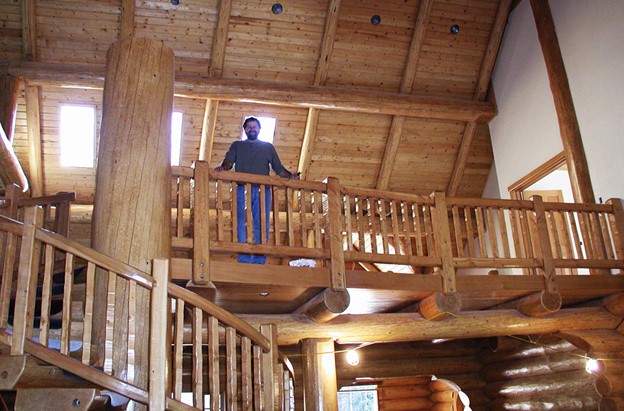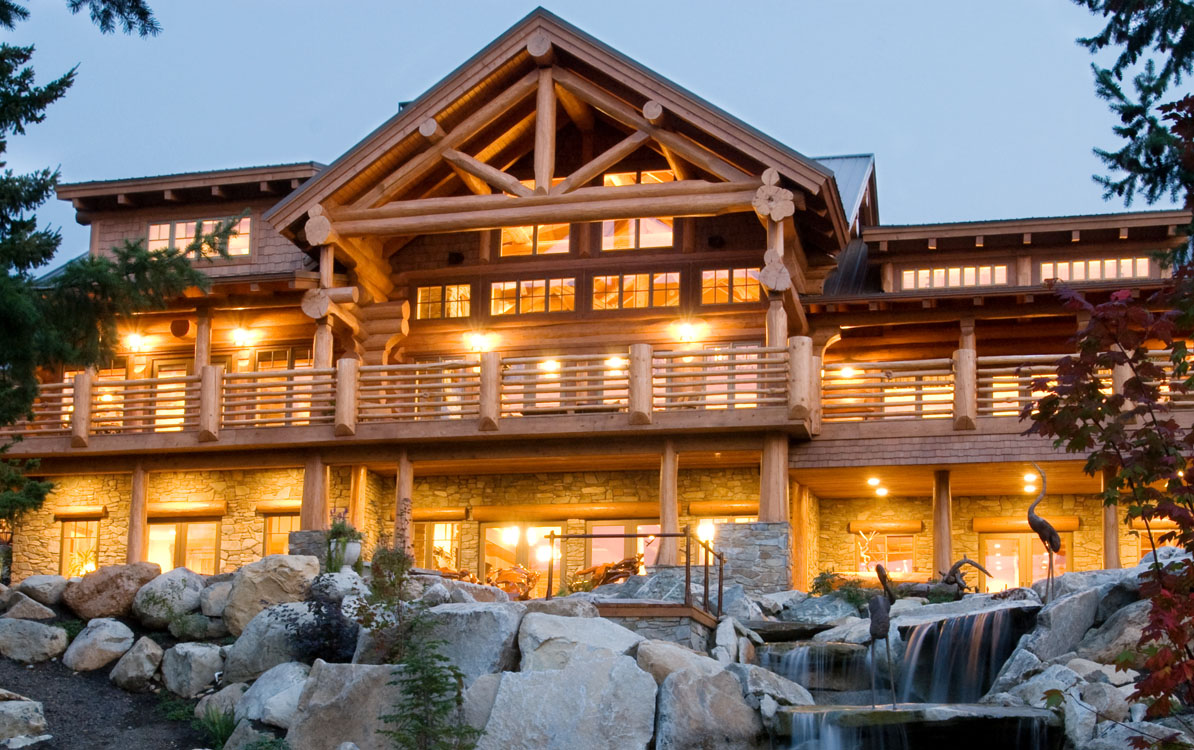 Perma-Chink Systems, Inc
Log & Timber Home Care Experts
Perma-Chink Systems, Inc
Log & Timber Home Care Experts
We are excited to share a very unique project, something that could very be a first for this company - a log home interior of a van, sealed with Perma-Chink. Yes, a van as in the automobile variety.
This project is a fantastic example on the flexibility of our products, and the creative imagination of our customers. We'll turn over the background of the project to the customer, Barbara P., in their own words.
The key indicators that your logs need a little R & R (repair and refinish)
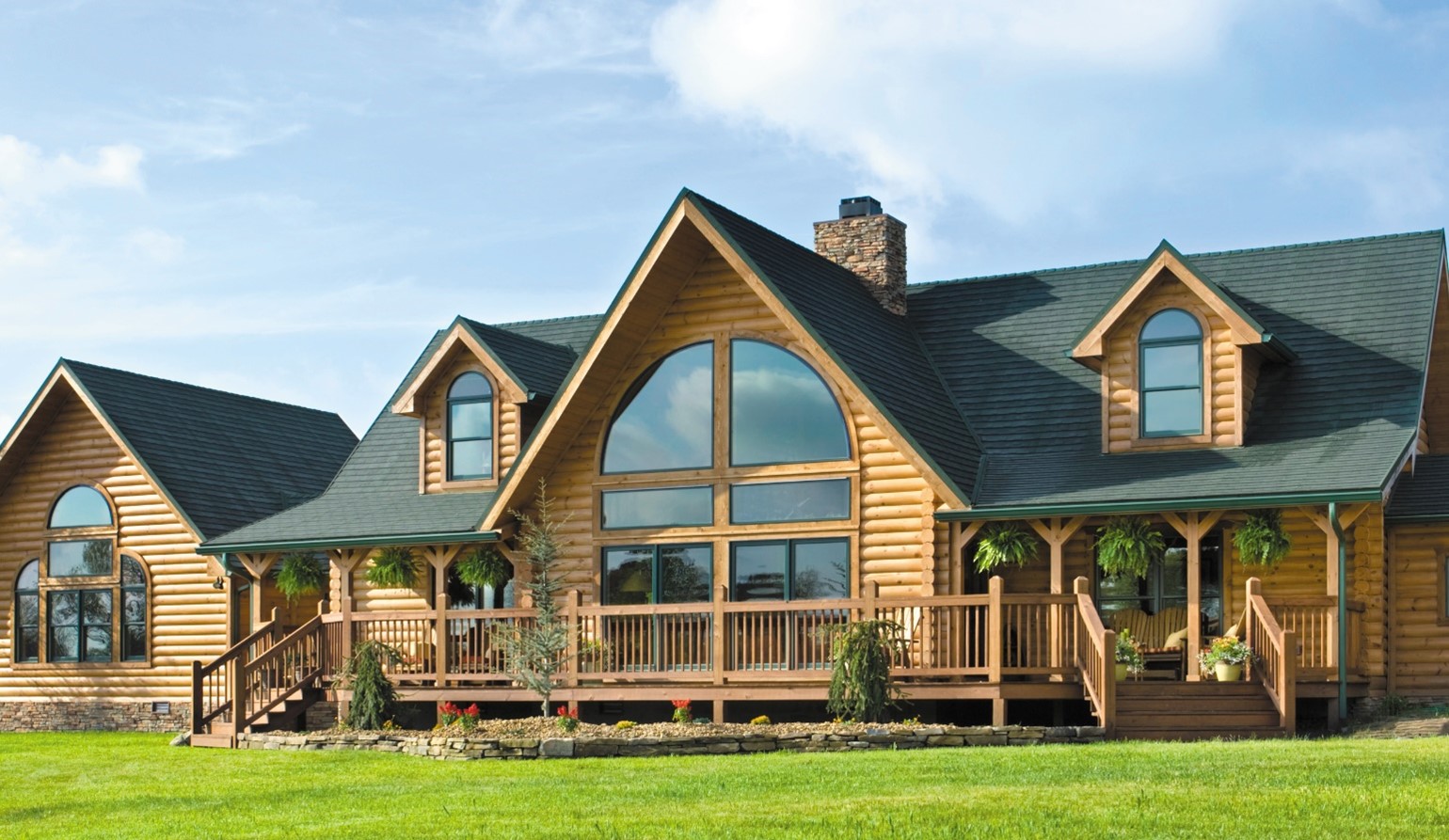
It’s difficult to ignore a log home; they possess a personality that always turns heads. Such natural good looks are part of their allure, but the attention they command extends to more than admiration. Log homes need regular maintenance to protect their beauty, performance and longevity. Fortunately, a few simple indicators will tell you exactly what your home needs (and when!). Here’s how to assess your logs’ status:
What Makes A Topcoat Different?
There is a common thought out there that believe topcoats are just the regular finish without color added. However, our topcoats are completely different than our finishes because they do different things.
Lifeline Acrylic Gloss and Satin (G/S) and Sure Shine™ Gloss and Satin are totally different formulations than Lifeline Interior or any other finish. Lifeline Interior, Lifeline Accents, and Prelude™ contain a polymer system that offer some distinct adhesion advantages when applied to bare wood. Topcoats are designed to envelope those finishes, protecting the color and wood from environmental damage and everyday living.
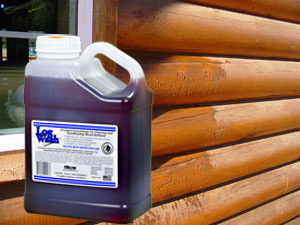 Log Wash is The Easy-to-Use Cleaner for Interior and Exterior Surfaces
Log Wash is The Easy-to-Use Cleaner for Interior and Exterior Surfaces
The initial reason we developed Log Wash™ was for cleaning finished log home exterior surfaces. We found that all of the products typically recommended for general maintenance cleaning like Spic & Span, Mr. Clean or even mild dishwashing soaps softened finished surfaces during the cleaning process. This resulted in potential finish damage, especially if a pressure washer or a brush was used. It turned out that the one thing these cleaners all had in common was their high pH. When we tried the Log Wash formulation we found that it hardened the surface of our finish system and no damage occurred to the finish - even with vigorous scrubbing. It was only later that we discovered the benefits of using Log Wash on bare wood.
The inside of a home is where you do most of your living. As such, it’s important to take time to select the right interior stains and finishes for your log and timber home. You will achieve an interior that is visually pleasing and performs well for years when a proper stain is chosen.
Two Traits
When it comes to interior finishes, there are two phenomena that homeowners tend to overlook.
What’s the Difference Between Caulking and Log Chinking?
High-quality sealants help older cabins last for generations and give newer ones the rustic good looks many desire. Our sealants provide protection that will let them carry their historic styles far into the future. But when it comes to the language surrounding the sealant between logs, many people call chinking “log caulk.” Log caulk and log chinking are often used interchangeably, but these sealants are completely different. In fact, you should never, ever caulk a log home.
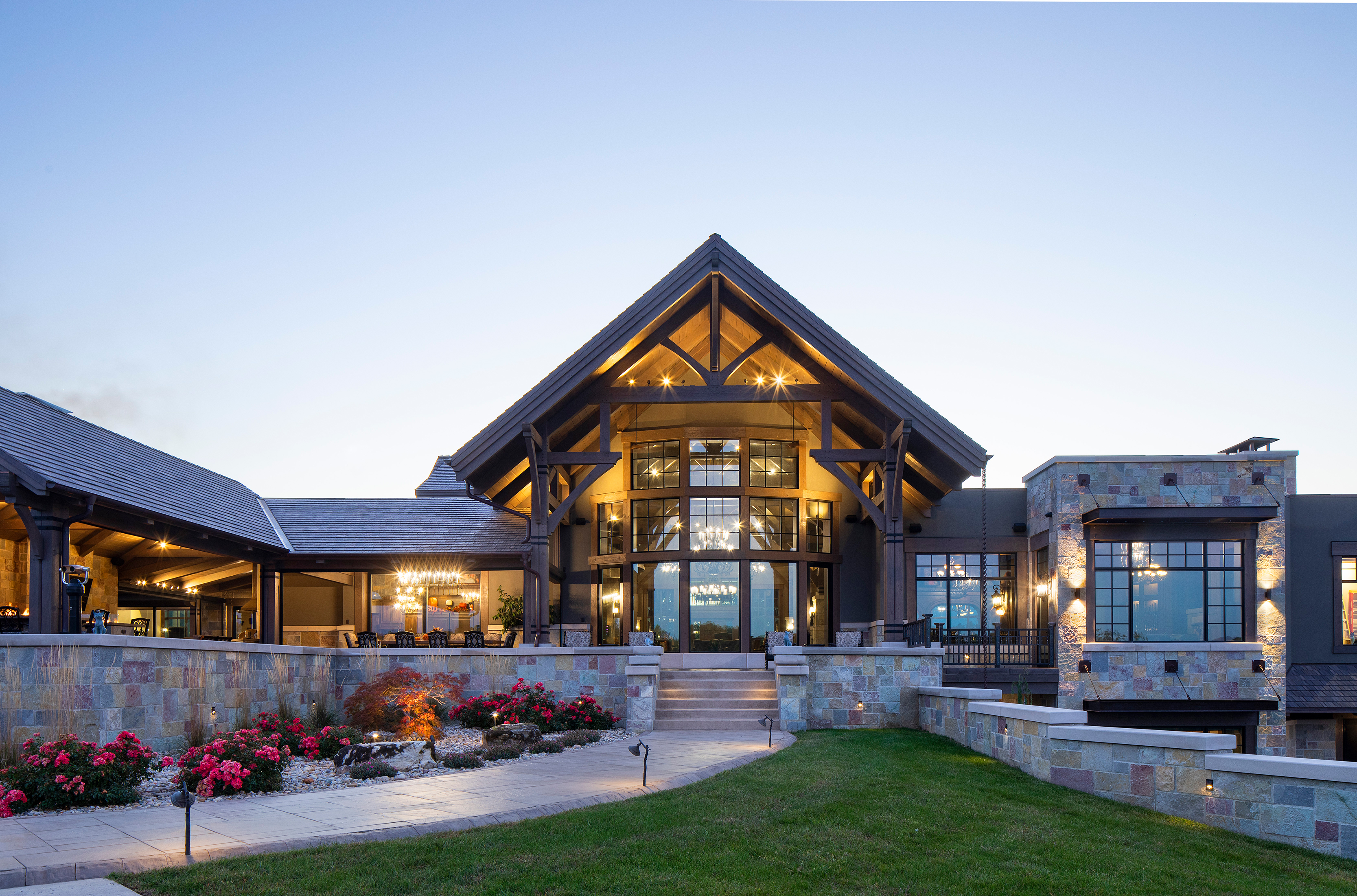
Guest post by Seth Murphy, papadiy.com
A home is more than just a shelter; it serves as our intimate sanctuary. The atmosphere within its walls profoundly influences our emotions, efficiency, and overall well-being. Central to cultivating a calm home atmosphere is the principle of tidiness.
Through consistent cleanliness and organization, we carve out a peaceful niche that rejuvenates our soul. By embracing straightforward daily practices, our living spaces can evolve into serene havens. In this article, which is shared courtesy of Perma-Chink Systems, we will explore straightforward routines that offer both a structured environment and mental clarity.
In loving memory of our late president Rich Dunstan.
In The Beginning
In 1980 my neighbor told me about building a log home in Eastern Washington. He said that he loved the home and the lifestyle but was disappointed wind constantly blew and cold, harsh winters meant there was no real effective way to seal the gaps between the logs. The house leaked air and heat and wind-driven rain came right through the walls.
He tried various caulking materials with little success. Caulking around a bathtub or sink was significantly different from ‘caulking’ literally miles of seams between logs in a log house. After a number of conversations and experiments, we discovered there was no readily available product that could seal the gaps, look like authentic chinking, and last more than a few months.
After months of trial and error it became apparent that if we were going to design a material that would be acceptable to our criteria, we would have to design it ourselves.
The product we were designing was to be a replacement for what was known in the Log Home Industry as “chinking” – the sealant that historically provided the seal between the logs. A chink is a gap – as in Biblical Times, “A chink in his armor’. Therefore, chinking is a material to fill a gap. Throughout the centuries of constructing dwellings out of logs, numerous methods were used to seal in between them. Early builders used pretty much anything they could get their hands on to seal the gaps – mud, straw and mud, cow manure, or mixtures of cement and mortar.
This Michigan log home was completed by the homeowners over 2 years in 2016-2017. Red pine logs were regionally sourced from Wisconsin and northern Michigan. The homeowners peeled, sanded, stained, and sealed the log home themselves, making this home a beautiful labor of love.
The exterior is finished with Lifeline Ultra-2 Sequoia with Advance Gloss, and log gaps sealed with Perma-Chink Stone. Interior logs and beams were finished with Lifeline Ultra-2 Dark Natural and Advance Gloss topcoat for the rest. Gaps were filled with Energy Seal - Dark Natural for interior, Dark Walnut for exterior gaps.
"Using your products was so effortless with easy application, no odor, and easy clean up. We have recommended Perma-Chink to others who have log homes in the area." - Roger & Diane G.
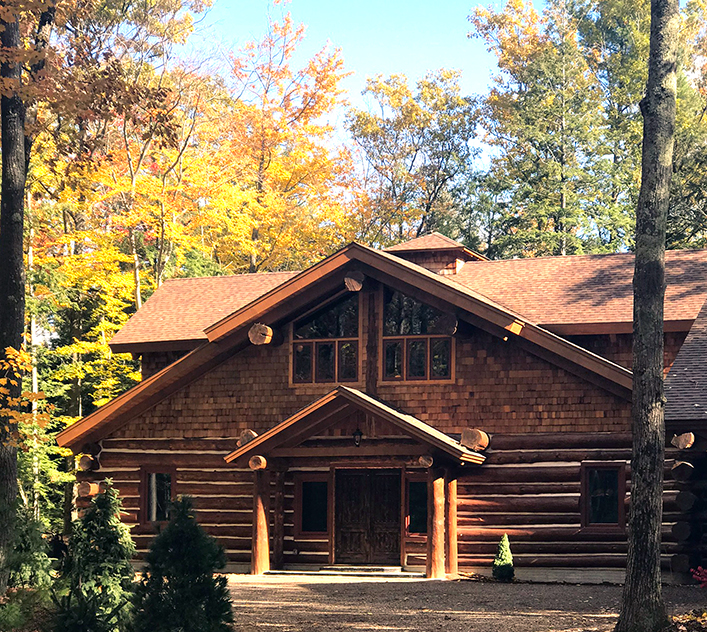
How do I know what color PCS stain will be on my house?
Not just Beautiful, but also Durable!
In addition to building a strong home, you want to build a beautiful home, too, which is why the finished appearance of your logs is so important. No doubt that high-quality finishes will save you time and money in the long run. Longer lasting PCS finishes equates to less labor expense over the life of the finish.
Simply Unmatched.
The benefits of Lifeline Ultra are endless, but here are some points that differentiate the Lifeline brand from others.
1. Unsurpassed Adhesion to Wood
The secret behind its durability is Lifeline's state-of-the-art resin that creates a flexible and tough seal on your home’s logs. Perhaps more importantly than the seal’s strength, the resin ensures a continuous seal, providing protection from holes and gaps that might otherwise develop with an inferior finish.
2. More Resistant to UV Degradation and Color Fading
The transparent iron oxides protect your logs without resulting in a “painted” look that hides the natural texture and beauty of the wood grain. Plus, these pigments provide superior UV protection, blocking the fading and bleaching effects of the sun for a much longer period of time.
3. Water-Resistant and Breathable
All Lifeline finishes form water-resistant film that breathes just like Gore-Tex® to allow trapped moisture to evaporate while protecting the wood.
4. 5-Year Warranty
We are so confident in the performance of Ultra-7 and Ultra-2 that it comes with a 5-year warranty against UV exposure when applied to bare wood and covered with an initial coat of Advance clear topcoat.
5. Meets and Exceeds all Standards for low-VOC
Water-based finishes lack the chemicals in oil-based finishes that are harmful to the environment and difficult to clean up.
Unlimited Color Choices
I think we have already convinced you that the Lifeline Ultra brand is the best there in the industry for any wood home. Now here is the icing on the cake - you can choose any color your heart desires!
Choose from any colors below or send us your desired color chip. Then let us know what base you want the color to be in - Lifeline Ultra-7, Lifeline Ultra-2, Lifeline Accents or Lifeline Exterior.
Transparent stains develop color differently, depending primarily upon the wood species, the surface preparation, the application method and the kind of light illuminating it. Even photos can be edited in a way that alters the true color.
The only way you will really know how the stain will look is to try it on your wood. We will provide complimentary samples of Lifeline for you to try on your own wood before purchasing the product.
If you're looking for a different color than what we offer, we will make a custom stain color for you the same day. Don't wait, call us today for your custom color at 1-800-548-3554.
The Family of Standard Colors
-
 Butternut
Butternut
Butternut
Butternut
-
 Caramel
Caramel
Caramel
Caramel
-
 Midnight
Midnight
Midnight
Midnight
-
 Autumn Gold
Autumn Gold
Autumn Gold
Autumn Gold
-
 Azure
Azure
Azure
Azure
-
 Oak
Oak
Oak
Oak
-
 Almond
Almond
Almond
Almond
-
 Dark Honey
Dark Honey
Dark Honey
Dark Honey
-
 Newport
Newport
Newport
Newport
-
 Cedar
Cedar
Cedar
Cedar
-
 Garnet
Garnet
Garnet
Garnet
-
 Cinnabar
Cinnabar
Cinnabar
Cinnabar
-
 Wheat
Wheat
Wheat
Wheat
-
 Chestnut
Chestnut
Chestnut
Chestnut
-
 Natural
Natural
Natural
Natural
-
 Bordeaux
Bordeaux
Bordeaux
Bordeaux
-
 Smoke
Smoke
Smoke
Smoke
-
 Black Walnut
Black Walnut
Black Walnut
Black Walnut
-
 Eucalyptus
Eucalyptus
Eucalyptus
Eucalyptus
-
 Sequoia
Sequoia
Sequoia
Sequoia
-
 Espresso
Espresso
Espresso
Espresso
-
 Hazelnut
Hazelnut
Hazelnut
Hazelnut
-
 Rustic Gray
Rustic Gray
Rustic Gray
Rustic Gray
-
 Charcoal
Charcoal
Charcoal
Charcoal
-
 Bronze
Bronze
Bronze
Bronze
-
 Sand
Sand
Sand
Sand
-
 Umber
Umber
Umber
Umber
-
 Walnut
Walnut
Walnut
Walnut
-
 Driftwood
Driftwood
Driftwood
Driftwood
-
 Spruce
Spruce
Spruce
Spruce
-
 Evergreen
Evergreen
Evergreen
Evergreen
-
 Stone Gray
Stone Gray
Stone Gray
Stone Gray
-
 Gentry Gray
Gentry Gray
Gentry Gray
Gentry Gray
-
 Jade
Jade
Jade
Jade
-
 Beachwood
Beachwood
Beachwood
Beachwood
-
 Forest
Forest
Forest
Forest
-
 Barn Gray
Barn Gray
Barn Gray
Barn Gray
-
 Fern
Fern
Fern
Fern
-
 Classic Brown
Classic Brown
Classic Brown
Classic Brown
-
 Pickled White
Pickled White
Pickled White
Pickled White
https://www.permachink.com/blog/page-2?start=98#sigProIda4d19dc97a
-
 Clear 110
Clear 110
Clear 110
Clear 110
-
 Butternut 154
Butternut 154
Butternut 154
Butternut 154
-
 Light Honey 112
Light Honey 112
Light Honey 112
Light Honey 112
-
 Dark Honey 122
Dark Honey 122
Dark Honey 122
Dark Honey 122
-
 Light Natural 120
Light Natural 120
Light Natural 120
Light Natural 120
-
 Dark Natural 130
Dark Natural 130
Dark Natural 130
Dark Natural 130
-
 Hazelnut 170
Hazelnut 170
Hazelnut 170
Hazelnut 170
-
 Cinnamon 174
Cinnamon 174
Cinnamon 174
Cinnamon 174
-
 Walnut 165
Walnut 165
Walnut 165
Walnut 165
-
 Driftwood 161
Driftwood 161
Driftwood 161
Driftwood 161
-
 Stone Gray 163
Stone Gray 163
Stone Gray 163
Stone Gray 163
-
 Gentry Gray 142
Gentry Gray 142
Gentry Gray 142
Gentry Gray 142
-
 Pickled White 150
Pickled White 150
Pickled White 150
Pickled White 150
-
 Seagull 152
Seagull 152
Seagull 152
Seagull 152
https://www.permachink.com/blog/page-2?start=98#sigProId8a5610dc30
-
 Saffron 215
Saffron 215
Saffron 215
Saffron 215
-
 Buckskin 230
Buckskin 230
Buckskin 230
Buckskin 230
-
 Saddle Brown 235
Saddle Brown 235
Saddle Brown 235
Saddle Brown 235
-
 Slate 242
Slate 242
Slate 242
Slate 242
-
 Mesquite 250
Mesquite 250
Mesquite 250
Mesquite 250
-
 Silver Mist 262
Silver Mist 262
Silver Mist 262
Silver Mist 262
-
 Smoky Sky 263
Smoky Sky 263
Smoky Sky 263
Smoky Sky 263
-
 Sable 265
Sable 265
Sable 265
Sable 265
-
 Russet 266
Russet 266
Russet 266
Russet 266
-
 Cimarron 274
Cimarron 274
Cimarron 274
Cimarron 274
https://www.permachink.com/blog/page-2?start=98#sigProIdcb78a06d70
